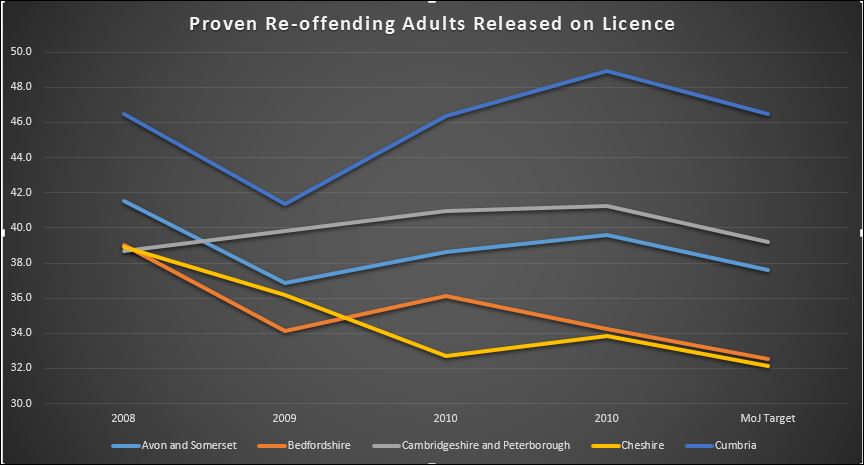This is the fifth in my series of 10 commandments for payment by results.
Thou shall not pay for deadweight
Payment by results is about driving improvement, so no self-respecting PBR scheme will pay for results that will happen anyway, known in the jargon as “deadweight”.
The proportion of deadweight in a PbR funded initiative varies markedly across different spheres of operation.
Despite all the adverse publicity about reoffending rates which has accompanied the debate about the Rehabilitation Revolution, 65.8% of those supervised in the community and 53.1% of those released from prison do NOT re-offend in the first year, according to the latest MoJ figures (covering July 2010 – June 2011).
As you can see, the majority of the reoffending caseload is made up of deadweight.
However, when we look at the Work Programme, only 5% of the long term unemployed are expected to find work without any specialist help in a 12 month period.
So, in this arena deadweight is much less significant.
Cohorts
One of the challenges for commissioners designing payment by results schemes is how to factor deadweight into the equation in a way that is both fair and reliable.
In an environment with such a lot of deadweight, the Ministry of Justice has sought to base its payment mechanism on the comparison of cohorts of offenders.
The Work Programme, on the other hand, tracks the performance of individual job seekers, making an additional payment for every month that an individual remains in a job for up to two years.
Choosing the right cohort is critical
The interim results of the Peterborough prison PbR pilot scheme were released in June 2013.
Toby Eccles from Social Finance, who co-ordinate the scheme, provided some helpful additional information and shares my view that the perception of how successful the pilot has been so far varies according to the cohort you compare it with.
When you compare reoffending rates from Peterborough prison to the period two years previously, the pilot scheme has reduced offending both in terms of the proportion of offenders committing a further crime (down from 41.6% to 39.2% – the “binary” measure) and in the frequency of reconvictions (down from 87 per 100 offenders to 81).
When you set that in context of what was happening at the same time across the rest of the country, the results look even better – nationally, binary reoffending rates went up from 37.3% to 39.3% and frequency from 69 to 79 reconvictions per 100 offenders.
So, compared to the national trend, the Peterborough pilot scheme was performing 23% better (6% improvement against a 17% downward trend nationally).
However, if you compare Peterborough’s current performance against the national average, there’s not much difference.
Prisoners released from Peterborough are slightly less likely to re-offend (39.2% v 39.3%) nationally but slightly more likely to be reconvicted more frequently (81 reconvictions per 100 against 79 nationally).
Implications for new reducing reoffending contracts
So, what does this mean for the new MoJ reducing reoffending contracts?
It seems clear that providers’ performance will be compared against the historical baseline in their area with some complex adjustments built-in should the nature of their cohort change (in terms of offender profile in relation to how likely they are to reoffend).
The difficulty is that these reoffending rates tend to fluctuate much more than one might presume.
The chart below shows changing reoffending rates for adult prisoners released on licence over the last four years in the five probation trusts at the start of the alphabet (chosen to ensure randomness).
The final column shows what the MoJ reoffending target is likely to be if based on this latest data with a “statistically significant” reduction of 5%.
Potential new providers are already getting concerned about the apparent volatility of these reoffending rates.
In general terms, probation trusts have consistently improved their performance over the last decade, so why do the reoffending rates jump about so much?
The more I look at them, the more I have begun to notice an elephant in the room.
It appears that the single most important determinant of reoffending rates, at least in the short-term, may well be police activity and arrest patterns rather than the direct impact of the work undertaken by probation trusts or other organisations to reduce reoffending.
The would-be providers of these new multi-million pound contracts may start having some sleepless nights when they realise that the services they provide may not be the most important factor in achieving their results.
The next post will look at the SixthCommandment of PbR:
“Profit shall not be thy God”
Browse my comprehensive resource pack on Payment by Results.
Check out my Marmite Infographic for simple explanation of key PbR jargon.









